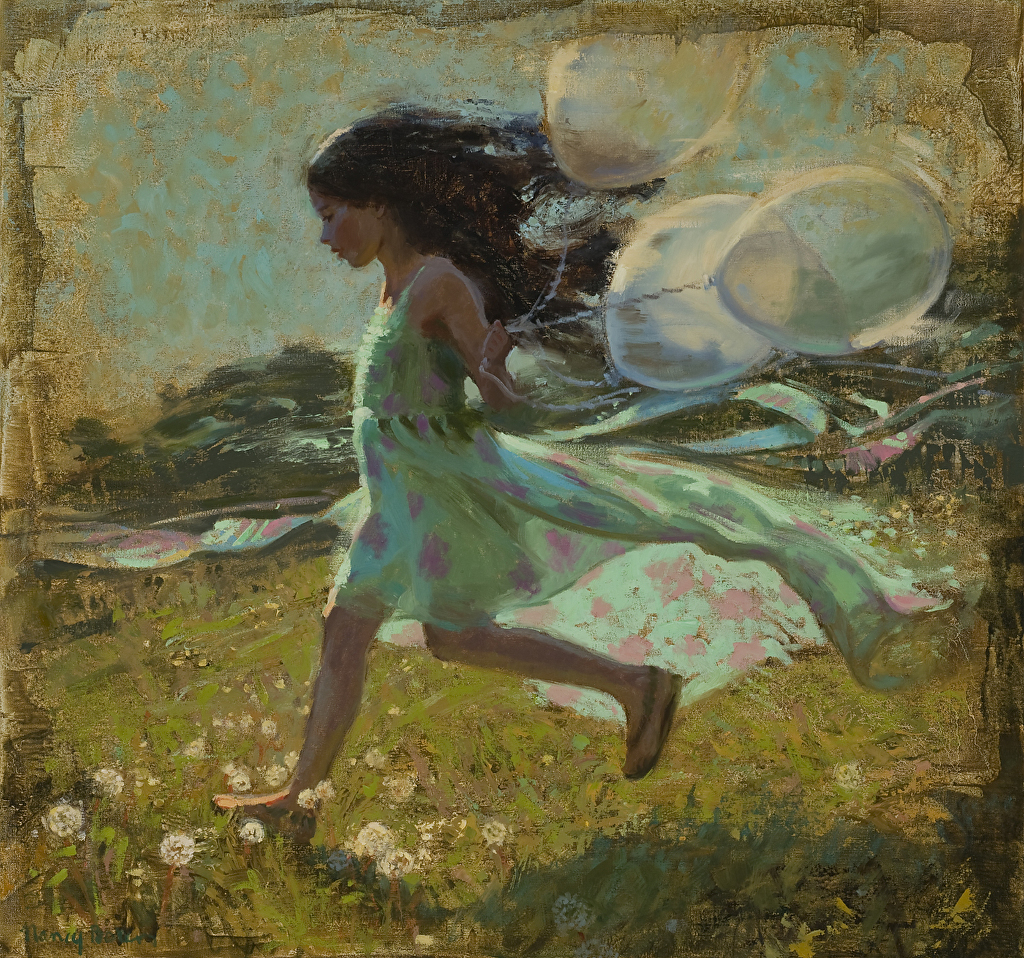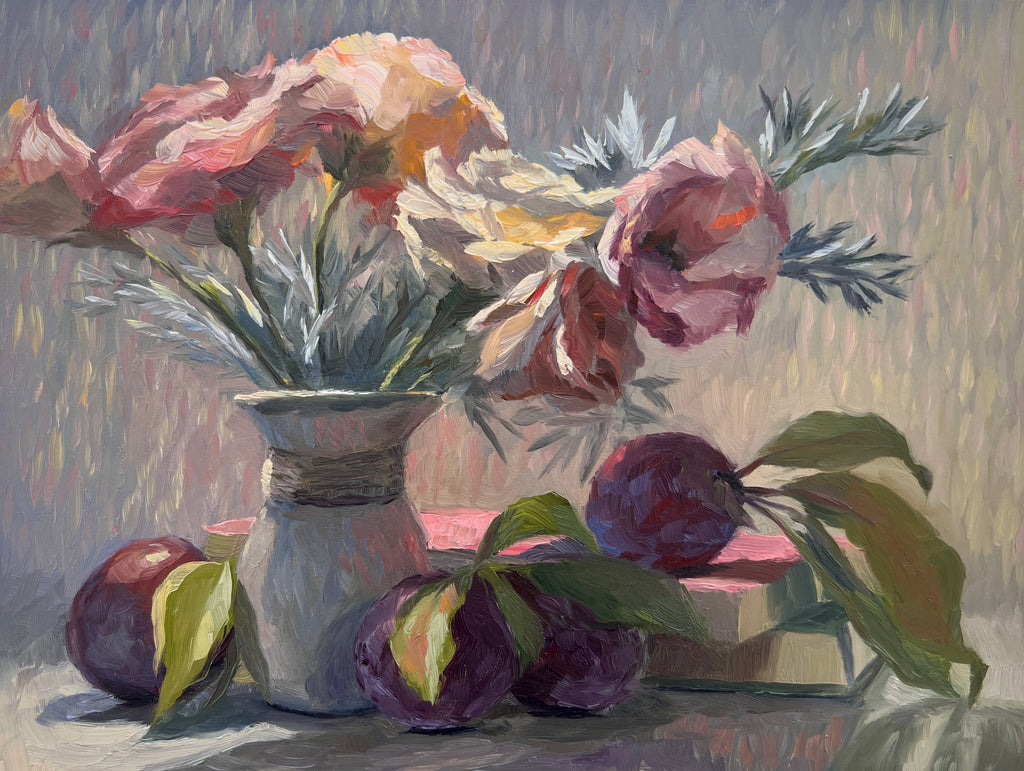Premium Framed Oil Paintings for Sale Direct from Studios
Premium Framed Oil Paintings for Sale Direct from Studios
Blog Article
Discovering All About Oil Paintings: A Guide to Comprehending Their Appeal and Worth
Oil paints have actually astounded target markets for centuries, using a look right into the creative mastery of various eras. Their rich background is intertwined with cutting-edge methods and profound emotional expression. Comprehending the materials and approaches behind these artworks can enhance gratitude. In addition, the marketplace for oil paints offers chances for collection agencies and financiers alike. As one discovers this remarkable globe, the inquiry emerges: what makes an oil paint genuinely important?
The Background of Oil Painting: A Trip With Time
Although oil painting has roots that go back to ancient times, it truly prospered during the Renaissance, when musicians found its adaptability and rich shade potential. Early examples can be traced to the 7th century, with methods developing especially across societies. The medium came to be popular in Northern Europe in the 15th century, especially with the jobs of musicians like Jan van Eyck, that spearheaded its usage for comprehensive realism and lively hues. This duration marked a departure from tempera paints, enabling higher depth and texture. As oil paint spread, it affected countless musicians, leading to masterpieces by prominent figures such as Leonardo da Vinci and Rembrandt. The tool's legacy continues, forming the art globe well into contemporary times.
Recognizing Oil Paints: Materials and Techniques
As musicians discover the world of oil paints, they experience a diverse selection of products and techniques that define this medium. The main parts of oil paint consist of pigments, which offer color, and drying out oils, such as linseed, that bind the pigments and promote application. Various additives can customize the paint's texture and drying time, enhancing flexibility. Methods like glazing, where clear layers are constructed up, and impasto, which entails using thick paint, permit different aesthetic effects. Additionally, the use of brushes, combination knives, and even fingers can produce special textures and coatings. Comprehending these strategies and products allows musicians to completely reveal their imagination and achieve the desired impact in their artwork.
The Role of Color in Oil Paintings
Shade plays an essential function in oil paints, affecting both visual appeal and psychological resonance. Comprehending shade concept fundamentals, consisting of the connections in between colors, can improve a musician's capability to convey state of mind and environment. Additionally, understanding shade mixing strategies enables greater deepness and splendor in a paint's combination.

Shade Concept Essential
Recognizing shade concept is crucial for musicians functioning with oil paints, as it creates the structure for producing aesthetically engaging and harmonious compositions. Shade theory encompasses the study of just how shades communicate, the shade wheel, and the partnerships between key, additional, and tertiary colors. Musicians utilize complementary shades to improve contrasts and create prime focus, while analogous colors advertise unity and cohesiveness within a piece. Furthermore, the principles of warm and great shades influence the assumption of depth and space in a paint. Comprehending these principles permits artists to adjust shade effectively, guiding the viewer's eye and communicating their designated message. Mastery of shade concept inevitably enriches a musician's capacity to convey feelings and ideas with their job.
Emotional Effect of Shade
The emotional effect of shade in oil paintings plays a crucial function in just how viewers link and view with art work. Colors evoke certain sensations and moods, influencing the customer's emotional state. Warm hues like oranges and reds can create a sense of heat and power, while awesome tones such as blues and environment-friendlies often evoke peace or introspection. Artists purposefully pick color palettes to improve narrative components, guiding the audience's emotional trip. The saturation and comparison of colors better enhance these impacts, attracting attention and producing emphasis. Eventually, the interaction of shades in oil paintings not only enhances their visual appeal yet likewise works as a powerful medium for psychological expression, enriching the audience's experience and analysis.
Color Mixing Techniques
While many facets of oil paint add to the general structure, mastering shade mixing techniques is vital for accomplishing preferred effects and deepness. Shade mixing can be approached through various techniques, including the additive and subtractive processes. Additive mixing involves combining colors of light, while subtractive blending depends on pigments, where shades blend to create new tones. Musicians usually make use of a restricted scheme to create harmonious works, recognizing the partnerships in between primary, secondary, and tertiary shades. Techniques such as glazing and scumbling even more enhance depth and luminosity. By masterfully mixing shades, a musician can stimulate emotions, create centerpieces, and accomplish a feeling of realism, inevitably raising the painting's emotional and visual effect.
Famous Oil Painters and Their Iconic Functions

Well known for their mastery of shade and strategy, oil painters have actually created some of one of the most well known art work in background. Prominent musicians like Vincent van Gogh captivated audiences with his emotive brushwork in "Starry Night," while Claude Monet's "Perception, Daybreak" laid the foundation for Impressionism. Leonardo da Vinci's "Mona Lisa" continues to be an enduring icon of imaginative genius, showcasing his skill in capturing human expression. Rembrandt's "The Night Watch" illustrates his innovative use of light and shadow. Other notable figures consist of Pablo Picasso, that revolutionized modern art with his bold experimentation in works like "Les Demoiselles d'Avignon," and Georgia O'Keeffe, whose dynamic depictions of landscapes and flowers helped define American innovation. Each musician's unique style contributed significantly to the oil paint landscape.
Just how to Evaluate the Quality of an Oil Painting
Reviewing the quality of an oil painting involves a careful assessment of craftsmanship methods, in addition to an evaluation of shade and composition. Observing brushwork, layering, and the application of paint can reveal the artist's skill degree. Furthermore, the interplay of colors and the overall arrangement of components add considerably to the paint's visual value.
Evaluating Workmanship Techniques
A careful analysis of workmanship methods is necessary for establishing the high quality of an oil paint. Evaluators ought to initially take a look at the application of paint; thick, distinctive brushstrokes may suggest a competent hand, while overly consistent applications could show a lack of deepness. oil paintings for sale. The layering method is also important; the visibility of glazes and differed thickness can enhance luminance and complexity. In addition, the quality of the products utilized, such as the canvas and pigments, plays a significant role in sturdiness and total visual. Interest to information in aspects like edges and changes between shades reflects the musician's commitment to their craft. Inevitably, these strategies contribute to the paint's emotional influence and market price, acting as indicators of the musician's skill and intent
Evaluating Shade and Composition
While examining the high quality of an oil painting, one have to concentrate on the interaction of color and structure, as these aspects are fundamental to the art work's overall impact. Color selections can develop and evoke feelings state of mind; as a result, the musician's palette must be examined for consistency and comparison. A well-balanced composition routes the audience's eye and produces a sense of unity. Artists usually employ techniques like the rule of thirds or leading lines to enhance visual rate of interest. Furthermore, making use of light and shadow can add deepness, enhancing the three-dimensionality of the paint. Inevitably, an effective oil paint weds shade and structure, engaging the audience and inviting a much deeper recognition of the musician's vision and strategy.
Taking care of and Preserving Oil Paintings
Proper care and preservation of oil paintings is crucial for maintaining their integrity and durability. To safeguard these art work, it is vital to display them away from direct sunlight, which can trigger fading and staining. Preserving a steady atmosphere with regulated temperature level and moisture more aids in preventing damage. Cleaning up should be done gently utilizing a soft, dry fabric, avoiding any extreme chemicals that can harm the paint or varnish. Normal examinations for indications of degeneration, such as flaking or cracking, are suggested. When storing or carrying oil paintings, correct cushioning and framework are needed to avoid physical injury. Ultimately, attentive care adds to the visual allure and worth of oil paintings with time.
The Market for Oil Paints: Collecting and Spending
Understanding the marketplace characteristics for oil paintings is crucial for enthusiasts and capitalists alike. The value of these artworks is affected by various aspects, including the musician's credibility, historical value, and current fads. Collection agencies often seek items that reverberate personally while taking into consideration potential recognition in value. Galleries and auctions function as key locations for acquiring and selling, with costs changing based upon need and rarity. Buying oil paintings needs research study right into the marketplace, along with an understanding of authenticity and provenance. Additionally, emerging artists may use opportunities for significant returns, while established names can regulate high rates. Overall, a critical approach to accumulating can yield both visual pleasure and monetary incentives.

Regularly Asked Inquiries
What Are the Environmental Impacts of Oil Paint Materials?
The ecological influences of oil paint materials include the release of unpredictable organic compounds (VOCs), unsafe waste generation, and resource extraction for pigments. These variables add to contamination and environmental deterioration, elevating concerns among environmentally mindful artists and consumers.
Exactly How Do Various Canvases Influence Oil Paint Outcomes?
Various canvases influence oil painting results considerably. Surface, texture, and absorbency quality can alter paint application, drying times, and shade vibrancy. Musicians often choose specific canvases to achieve wanted results and boost their creative expression.
Can Oil Paintings Be Brought Back if Damaged?
If harmed, Oil paints can indeed be brought back. Expert conservators make use of various methods to fix splits, clean surface areas, and address staining, making certain that the art work preserves its original appeal and value for future generations.
What Are the Indicators of an Original Oil Painting?
The indicators of an original oil paint include visible brush strokes, structure variations, and an more info uneven canvas weave (oil paintings for sale). Additionally, credibility may be confirmed via provenance, trademarks, and the presence of a varnish layer one-of-a-kind to oil tools
How Has Modern Technology Influenced Modern Oil Paint Techniques?
Innovation has actually substantially influenced modern oil paint techniques by presenting digital devices for planning, boosted products for structure and long life, and on-line platforms for marketing and sharing art, therefore broadening musicians' imaginative possibilities and target market reach. Oil painting has roots that date back to old times, it absolutely flourished throughout the Renaissance, when musicians uncovered its convenience and abundant color possibility. The psychological impact of shade in oil paintings plays an essential duty in how visitors perceive and attach with art work. While numerous facets of oil painting add to the total composition, grasping shade mixing methods is crucial for accomplishing wanted results and depth. Reviewing the quality of an oil painting entails a mindful assessment of workmanship strategies, as well as an analysis of color and make-up. While reviewing the quality of an oil paint, one need to concentrate on the interaction of color and composition, as these aspects are essential to the art work's general influence.
Report this page